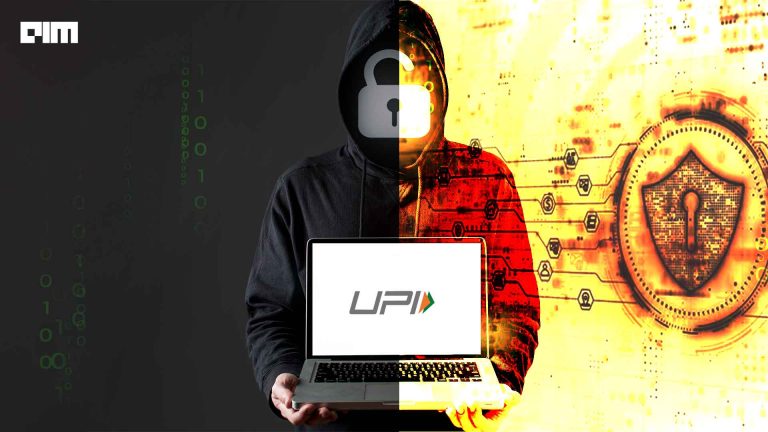|
Listen to this story
|
In November 2016, while India was facing ‘demonetisation’ and the population suddenly found themselves with no cash for day-to-day transactions—Paytm’s phone wallet saved the day, later followed by applications like ‘PhonePe’ and ‘GooglePay’.
At the time, the majority of these applications used to charge merchants transaction fees of nearly 1.5% while regular users were charged each time they attempted to deposit money into their bank accounts using the wallet feature of the payment app. As a result, the merchant was required to pay a transaction fee of 1.5% or INR 4.5 anytime a consumer attempted to make an INR 300 grocery purchase. It might seem insignificant, but when you take into account the merchant’s ideal profit, which is 5–6% (or INR 18), the resultant amount was definitely significant to the merchant.
All was changed when the Indian government introduced the Unified Payment System (UPI) and ‘BharatPe’ started distributing the common QR code to the merchants. Before getting popular, UPI only accounted for 6% of all payments in India, whereas card payments made up 36% of all transactions. But in FY-2021, UPI’s market share rose to 63%, while card payments were reduced to a mere 9% share.
In India, UPI-backed real-time payments have resulted in incremental cost savings of $12.6 billion in 2021, according to a report. UPI alone has contributed to India’s economy, adding $16.4 billion, or 0.56% to its GDP. As per projections, UPI payments are set to increase India’s GDP by $45.6 billion, or 1.12%, by 2026.
However, while the UPI may have solved the problem of interest rate to merchants, it simultaneously stopped generating revenue for the payment applications.
Furthermore, since the RBI has mandated that banks refrain from levying transaction fees on UPI transactions, the banks themselves have been unable to record profits through UPI. The adoption of UPI has also slowed down the usage of traditional systems like Internet Banking or NEFT, leading to decline in profits by way of transaction fees for the banks.
Will UPI be profitable?
If we take October 2022 data, the total value of transactions through UPI was nearly INR 12,11,582 crores. Now, if the banks charge a minimum of 1.5% transaction fee, banks can make INR 18,173 crore in profit for a single month.
Since UPI’s primary attraction was its lack of a transaction cost, one rightly speculates that if the transaction price were introduced, UPI’s overall utilisation might witness a decline. Furthermore, collecting a transaction fee for a UPI transaction can seem a little disingenuous given that India is aiming to eliminate transaction costs on payments and remittances made outside of the country via UPI.
Have we hit a deadend?
Not really, no. BharatPe, one of the numerous fintech businesses operating within the UPI ecosystem, was able to generate enormous profits. But the real question is whether banks imitate BharatPe’s business strategy? Or, to put it another way, can banks support other fintech services like GooglePay that have been losing money ever since they were introduced in the Indian market?
BharatPe’s strategy essentially meant that instead of charging merchants a transaction fee, it started handing out loans to them. The company understood that in the $600 billion retail industry in India, the 13 million Kirana stores play a huge role. Oftentimes, these small businesses are in need of capital, but don’t have enough credit score to take a loan from the bank. So, BharatPe developed an algorithm that tracked the cash inflows of these small general stores as well as their spending habits.
Based on the results of their algorithm, BharatPe consequently handed out loans. The success rate of this model can be analysed merely by the fact that the company was able to recover 96% of its loaned money. The magnitude of this is further realised when one sees that BharatPe handed out INR 3,600 crores in the April–June period alone.

BharatPe was able to achieve this by deducting a specific amount per month, even before the merchant receives the money from customers. For example, if a merchant takes a loan of INR 10,000 from BharatPe, and the company charges an interest rate of around 2% per month, it’ll be around INR 200 per month. The application then took care of deducting the specified sum each month, eliminating the need for a manual payment. For instance, BharatPe would only provide INR 14,500 if the merchant had a cash inflow of about INR 15,000 after deducting some money for loan repayment. In this way, neither the merchant nor the payment application are subject to a significant load.
Considering the fact that e-rupee for business has been introduced by RBI for a pilot project, it can just as soon be introduced in the retail sector too. Now more than ever, RBI has a higher chance of tapping into the transaction details of merchants as well as consumers. As per NPCI data, 23.3% of total transactions happening over UPI ecosystem in October 2022 are P2M, which accounts over INR 2,82,000 crores. Major sectors involved in such P2M transactions, according to NPCI, are groceries and supermarkets, restaurants and department stores. These are the specific sectors which need working capital on a daily basis and with the currently evolving state of the currency, it is plausible that RBI would consider adopting a business model like BharatPe’s in the near future.



















































































